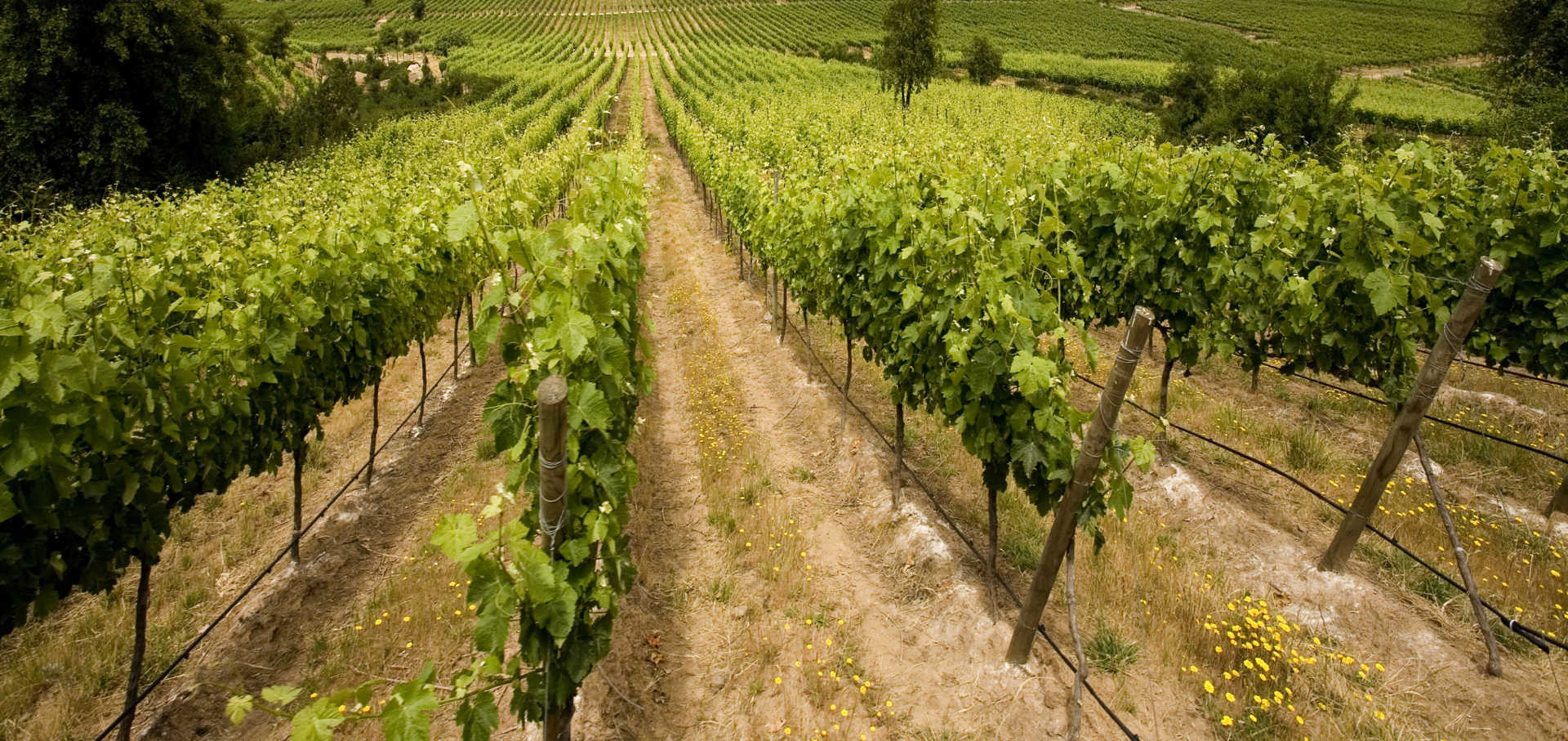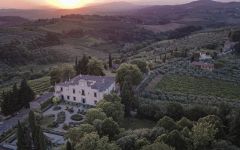Antinori Castello della Sala Cervaro 2016
-
James
Suckling -
Robert
Parker -
Wine &
Spirits



Product Details
Your Rating
Somm Note
Winemaker Notes
Professional Ratings
-
James Suckling
This is the Batard Montrachet of Italy with such and amazing depth and compression of beautiful fruit and chalk. Dried mango and dried green papaya. Full body, yet tight and focused. Energized acidity. Vibrance. Don't miss this one. A wine for now or in the future.
-
Robert Parker's Wine Advocate
The 2016 Cervaro della Sala ushers forth with grace, beauty and finesse. The mouthfeel is thinner and more streamlined, but this is in large part intentional. I have written about this in the past: This celebrated Italian white has experienced a restyling effort to lighten and brighten it up. Harvest is executed a bit earlier in order to limit alcohol. The percentage of Grechetto was reduced to make more room for the freshness and natural acidity that comes from the increased Chardonnay component. Lastly, skin maceration times were tweaked and reduced from about eight hours in past vintages to four to six hours (at cooler temperatures) in this vintage. All of these changes work to reverse the textural heaviness and fruit maturity that, to many, feels out of date in today's wine market. The results are clear. This is a pristine and elegant interpretation with crisp notes of peach and tropical fruit followed by sharp mineral definition. Those salty flavors come from the Grechetto. The wine ferments and stays in oak for five months. This is a classic vintage that has produced a profoundly vertical and focused wine. I'm told that great efforts have been made to recreate this magic formula in 2017, despite the fact that vintage is much hotter and drier. For now, we have this beautiful wine to drink.Rating:95+
-
Wine & Spirits
This wine combines the toasty tones of barrel-fermented chardonnay with ten percent lemony grechetto. The wine’s fresh acidity tempers the richness of the oak influence while cool flavors of fresh apple and pear balance the smoky, spicy notes. The finish is long and complex, and the wine would make an excellent partner for scallops in a buttery tarragon sauce.
Other Vintages
2021-
James
Suckling -
Robert
Parker -
Wine
Enthusiast
-
James
Suckling
-
James
Suckling -
Robert
Parker
-
Robert
Parker -
Wine &
Spirits
-
James
Suckling -
Robert
Parker -
Wine &
Spirits -
Wine
Spectator
- Decanter
-
James
Suckling -
Robert
Parker -
Wine &
Spirits -
Wine
Spectator
-
James
Suckling -
Wine
Spectator
-
Robert
Parker -
James
Suckling -
Wine
Spectator
-
Wine
Spectator
-
James
Suckling -
Wine
Spectator -
Wine
Enthusiast -
Wine &
Spirits
-
Wine
Enthusiast
-
Robert
Parker
-
Wine
Spectator -
Robert
Parker
-
Wine
Spectator -
Robert
Parker
-
Wine
Spectator -
Robert
Parker
-
Wine
Spectator
-
Wine
Spectator
-
Wine
Spectator








The Antinori family has been committed to the art of winemaking for over six centuries since 1385 when Giovanni di Piero Antinori became a member of the "Arte Fiorentina dei Vinattieri," the Florentine Winemaker’s Guild. All throughout its history, twenty-six generations long, the Antinori family has managed the business directly making innovative and sometimes bold decisions while upholding the utmost respect for traditions and the environment.
Today, Albiera Antinori is the president of Marchesi Antinori with the continuous close support of her two sisters, Allegra and Alessia, all actively involved in first person in the business. Their father, Marchese Piero Antinori, is the current Honorary President of the company. Tradition, passion, and intuition are the three driving forces that led Marchesi Antinori to establish itself as one of the most important winemakers of elite Italian wine. The company is one of the Founding Members of the "Associazione Marchi Storici d’Italia," an association for the protection, support and promotion of Italian historical brands.
The family’s historical heritage lies in their estates in Tuscany and Umbria, however over the years they have invested in many other areas, both in Italy and abroad, well known for producing high quality wine, opening new opportunities to appreciate and develop unique new terroirs with great winemaking potential. Each vintage, each plot of land, each new idea to be advanced is a new beginning, a new pursuit for achieving higher quality standards. As Marchese Piero loves to say "Ancient family roots play an important part in our philosophy but they have never hindered our innovative spirit."

One of the most popular and versatile white wine grapes, Chardonnay offers a wide range of flavors and styles depending on where it is grown and how it is made. While it tends to flourish in most environments, Chardonnay from its Burgundian homeland produces some of the most remarkable and longest lived examples. California produces both oaky, buttery styles and leaner, European-inspired wines. Somm Secret—The Burgundian subregion of Chablis, while typically using older oak barrels, produces a bright style similar to the unoaked style. Anyone who doesn't like oaky Chardonnay would likely enjoy Chablis.

Centered upon the lush Apennine Range in the center if the Italian peninsula, Umbria is one of the few completely landlocked regions in Italy. It’s star red grape variety, Sagrantino, finds its mecca around the striking, hilltop village of Montefalco. The resulting wine, Sagrantino di Montefalco, is an age-worthy, brawny, brambly red, bursting with jammy, blackberry fruit and earthy, pine forest aromas. By law this classified wine has to be aged over three years before it can be released from the winery and Sagrantino often needs a good 5-10 more years in bottle before it reaches its peak. Incidentally these wines often fall under the radar in the scene of high-end, age-begging, Italian reds, giving them an almost cult-classic appeal. They are undoubtedly worth the wait!
Rosso di Montefalco, on the other had, is composed mainly of Sangiovese and is a more fruit-driven, quaffable wine to enjoy while waiting for the Sagrantinos to mellow out.
Among its green mountains, perched upon a high cliff in the province of Terni, sits the town of Orvieto. Orvieto, the wine, is a blend of at least 60% Trebbiano in combination with Grechetto, with the possible addition of other local white varieties. Orvieto is the center of Umbria’s white wine production—and anchor of the region’s entire wine scene—producing over two thirds of Umbria’s wine. A great Orvieto will have clean aromas and flavors of green apple, melon and citrus, and have a crisp, mineral-dominant finish.
